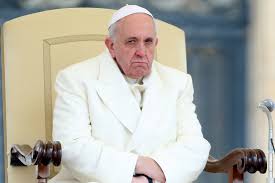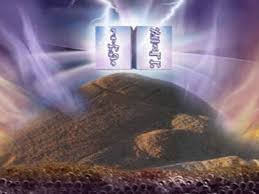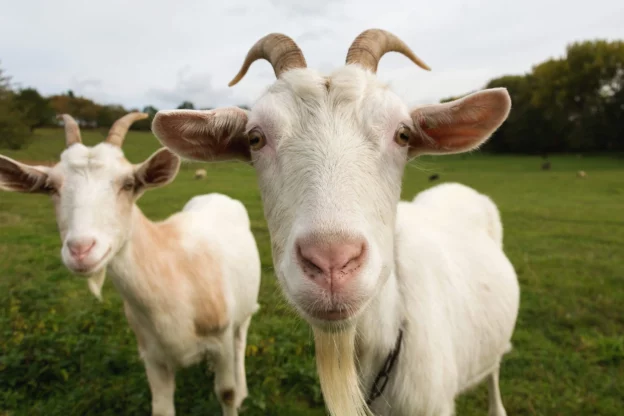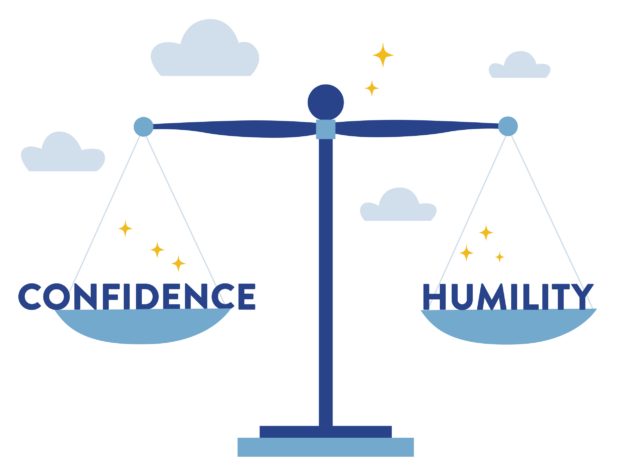You can read why here.


You can read why here.

Is there any reason why the Torah uses the definite article (“the”) in its first pasuk? Couldn’t it have said “In the beginning, Elokim created heavens and earth” – minus the “the”s?
While we can never truly know what transpired at the dawn of creation – Mishlei 25:2 says “The honor of Elokim is hiding the thing,” which Rabi Levi in the name of Rabi Chama bar Chanina (Beraishis Rabbah 9:1) applies to the creation week – it’s reasonable to assume that “heavens” refers to space (Rav Hirsch sees the word shomayim as referring to all the “shom”s – the “theres” in all directions); and “earth,” to matter (and, perhaps, what we call energy). So what’s with the “the”s?
I raise the question not to answer it, rather only to ruminate on that Hebrew letter, the one that serves to mean “the” or “that” – the letter hei.
The universe Hashem created, to the best of our perception, has three spatial dimensions and one temporal one. To pinpoint an object, one has to identify its three axes in space and its “place” in time.
To get a fix on a hot air balloon, for instance, we must know its longitude, latitude and altitude; and when it is there.
Which leads to an interesting observation: After the first four letters of the Hebrew alphabet, which might correspond to our four-dimensional universe, we have its fifth, the letter that is used as a prefix to mean “the” or “that” – the words we use to point to a particular thing.
© 2024 Rabbi Avi Shafran

A subtle and fascinating hint to how history unfolded since the revelation at Har Sinai is pointed out by Rav Hutner – in two words used at the start of the parshah.
“Hashem came from Sinai,” we read, “… and shone forth from Seir; He projected from Har Paran…” (Devarim 33:2).
The word zarach clearly means “shone”; hofi’a, a less common word, implies radiating or projecting.
The Gemara (Avodah Zarah 2b) and Sifri (Devarim 343) recount how Hashem offered the Torah to other nations but each asked what it contained and, informed of a law that went against its grain, refused to accept it.
Rashi alludes to that account, and identifies Seir with “the children of Esav” and Har Paran with “the children of Yishmael.” Both of which peoples were offered but rejected the Torah.
Rav Hutner (in his Pachad Yitzchak ma’amarim on Shavuos) sees a “subtle and transparent hint” in the verbs “shone” and “radiating.”
Esav, which is Edom, which is Rome, stands for the falsehood of idolatry, the worship of a man. Yishmael, the progenitor of the Arab world, stands for the embrace of a false prophet. Rav Hutner doesn’t get more specific than that. Neither shall I.
The refusals of Edom and Yishmael to reject, respectively, idolatry and false prophethood, empowers the Jews’ ready acceptance of the Torah and reflects what happened at Sinai.
The “shining” corresponds to the first two of the Aseres Hadibros, which “shone” directly from Hashem upon our ancestors at Sinai. And the less direct “projection” refers to the remainder of the Dibros, which were merely witnessed by the people (after their plea) but transmitted to the ultimate prophet, Moshe Rabbeinu, the “father of all true prophets.”
© 2024 Rabbi Avi Shafran

When one thinks about it, it’s clear that the Torah’s most fundamental message is that our lives are meaningful. That what we do makes a difference. And when one thinks about it a bit more, one realizes that the idea – that we are powerful enough for our actions to count in the cosmos – is really most shocking.
It’s a truth, unfortunately, that’s not embraced by a considerable chunk of humanity, by countless people who choose to view their existence as nothing more than the product of a long series of meaningless, chance happenings. And what they do or don’t do, as essentially meaningless.
I have often wondered how, despite that delusive belief, such rejecters of human purpose justify their glaringly contradictory claim that ethics or morality exist. If humans are not qualitatively different from amoebas, why should there be any more meaning to good and bad actions than to good or bad weather? Why should there be any more import to right and wrong than to right and left?
Some of the “we’re all just the detritus of random events” crowd try to deflect those starkly obvious questions by invoking the idea of a “social contract,” the agreement of all people to behave a certain way in order to ensure everyone a greater likelihood of survival and happiness.
But a social contract, to the extent that it can actually work, is at best only a practical tool, not a serious imperative. Only if there is a Creator in the larger picture, offering our behavior consequential meaning, can there be true import to human life, placing it on a plane above that of aphids and aardvarks.
Even from a purely secular perspective, seeing life itself, let alone human life, as the product of chance is absurd. Sir Fred Hoyle, who was a famed astronomer but also a deep thinker about science, called the notion of life’s random emergence “nonsense of a high order.” He embraced no religion but felt compelled nonetheless to compare the likelihood of the random emergence of life to that of “a tornado sweeping through a junk-yard… [and] assembl[ing] a Boeing 747 from the materials therein.”
The recognition of human life’s momentousness is poignantly pertinent to Yom Kippur.
Because, when the Beis Hamikdosh stood, as we recount and envision during our Yom Kippur tefillas Musaf, two indistinguishable goats were brought before the Kohein Gadol, who placed randomly-pulled lots on the heads of the animals. One lot read “to Hashem” and the other “to Azazel” – the name of a steep cliff in a barren desert.
The first was offered as a holy korban; the second, taken to the aforementioned cliff and thrown off, dying unceremoniously, as the Mishna (Yoma 6:6) recounts, battered to pieces before even reaching the bottom.
The goat that is brought as a korban – the word means “closeness maker,” as it brings the offerer closer to Hashem – implies recognition of the idea that we mortals are beholden to a divine mandate. And the counter-goat, fated to a desolate, unholy place, may imply a perspective of life as pointless, lacking higher purpose.
Strangely, the Azazel-goat is described by the Torah as carrying away Klal Yisrael’s sins. What might that mean?
Consider: The ability to sin stems from not fully realizing how meaningful our lives are; if we truly felt the power that inheres in our actions, we could never do wrong. Resh Lakish in fact said as much when he observed (Sotah 3a) that “A person does not sin unless a spirit of madness enters him.” Sin’s roots lie in the madness born of our doubting our significance.
And so it’s not outside the realm of the reasonable to imagine that the sight of the doomed-to-Azazel goat being led to an aimless, arbitrary death – the opposite of its erstwhile partner’s honored, sacred one – might serve to remind us of the stark difference between the two diametric attitudes toward human life.
Pondering our lives’ meaningfulness on the holiest day of the Jewish year would thus be most appropriate, generating thoughts of teshuvah, of re-embracing the truth of our power Hashem has given us, “carrying away” our sins.
G’mar chasimah tovah.
© 2024 Ami Magazine

It’s odd that, when Moshe Rabbeinu and Yehoshua transmit the shirah of Haazinu to the people, the Torah refers to Yehoshua as Hoshea (Devarim 32:44), his original name. Moshe, of course, had changed his eventual successor’s name 40 years earlier.
Rashi and others suggest that the use of Yehoshua’s original name alludes to the fact that, even as he was about to become the leader of Klal Yisrael, Yehoshua’s original name is used to show that he maintained the humility that had always been part of his character.
A twist on that observation is suggested by Meshulam Fayish Tzvi Gross (who had a weekly chavrusa in Kabbalah with Rav Yosef Yitzchok Schneersohn; and who, as Herman Gross, patented several inventions).
In his sefer Nachalas Tzvi, Rabbi Gross calls attention to the differential of circumstances between when Moshe changed Yehoshua’s name and when, in our parshah, the latter’s original name is employed.
When Hoshea bin Nun was faced with the need to stand up to the other scouts of Eretz Cna’an, to have the independence, clearheadedness and courage necessary to state the facts about the land, Then, Moshe was telling Hoshea, who was exceedingly humble (as Sifri in Shelach notes), to recognize his greatness, his ability to oppose the other meraglim’s report, to not succumb to peer pressure, to have full confidence in himself.
Moshe expressed his hope that Hashem would aid him in that. And so he added a hint to Hashem’s name to Hoshea’s – saying, “May Hashem save you from the intrigue of the scouts” (Sotah 34b).
Now, though, as Moshe is preparing Yehoshua to lead the people into Eretz Yisrael, posits Rabbi Gross, the Torah uses Yehoshua’s original name pointedly, as a message to him – that the independence and bravado that were necessary back when the land was being scouted are not longer needed for – in fact, in a sense diametric to – the assumption of leadership.
A true leader needs what was Yehoshua’s essence: humility.
It’s a lesson that most contemporary leaders seem ignorant of, and would do well to absorb.
© 2024 Rabbi Avi Shafran

Marta, a Honduran noncitizen immigrant who lives in a suburban Atlanta apartment complex, just wanted the two men who appeared at her door and said they were there to help Latinos navigate the election system “to go away.” Fearing she might be deported if she said the wrong thing, when they asked her if she had registered to vote, she just answered yes, hoping that would satisfy them.
It did indeed, though not the way she thought. The men, who surreptitiously videotaped the encounter, were working with the Heritage Foundation on a quest to reveal the extent of noncitizen voting, which is illegal (other than in a few local municipalities for local offices). The group eventually posted a video showing Marta and other noncitizens who also said they had registered to vote.
In truth, though, Marta (who, for obvious reasons, did not want her surname to be publicized) was not registered to vote and had never tried to register in the nine years that she had lived in the United States, according to a private fact-checking group brought in to investigate. Two other women who were featured in the video were also tracked down and confessed to having lied about registering to vote. State investigators found no evidence that any of the seven people on the tape had ever registered to vote.
Nevertheless, the video concluded that, “Based on our findings, the integrity of the 2024 election is in great jeopardy.” Elon Musk, X’s owner, helped the video go viral (it amassed more than 56 million views).
The issue of noncitizens preparing to vote in droves in November is on the political front burner. It has, in fact, held up approval of the federal budget. Because, appended to the budget proposal has been the “Safeguard American Voter Eligibility Act,” or SAVE, which would require voters to present proof of citizenship, like a passport or birth certificate, in order to be able to vote.
Last week, House Speaker Mike Johnson failed to pass a six-month extension of government funding with the measure, insisted upon by former President Trump and many Republican members of Congress, attached. Early this week, Congressional leaders reached an agreement (without a SAVE component) to keep the government working for three months, pushing final budget decisions until after the election.
Politics aside, though, the SAVE provision seems sane. Noncitizens should not be permitted to vote.
And they are not. There is already a federal law that penalizes any noncitizen who tries to vote. Illegally voting in a federal election can land a violator in prison for a year, and a noncitizen found guilty of voting faces deportation and denial of future immigration status. That, opponents of SAVE contend, is more than sufficient deterrent.
And SAVE’s requirement to prove citizenship, they add, would disenfranchise millions of voters. Less than half of Americans hold passports, and obtaining birth certificates, which few people have handy, can be time-consuming and requires payment of a fee.
But whether those critics are correct or not, is noncitizen voting a problem in the first place?
According to the libertarian Cato Institute’s Walter Olson, “Those who levy sensational charges [of widespread illegal voting] should bear the burden of proving them. But they haven’t.”
Even the Heritage Foundation itself has documented only 23 cases of noncitizens voting – over the course of two decades.
There have been glitches, though. Oregon’s DMV has revealed that, due to a “data entry issue,” it mistakenly registered at least 306 non-citizens as voters since 2021. The error was caught, though, before any of those registrants had a chance to try to vote.
More than any previous presidential election season, this one’s fuel seems to be fomenting fear. Each candidate doesn’t just tout his or her accomplishments or qualifications, and doesn’t just attack the opponent’s. Each claims that if he or she loses the election, the country will be destroyed, pushed off the brink into dictatorship or anarchy or fascism.
And unfounded fears of things like noncitizens voting en masse ratchet up the fear factor.
Despite all the panic-purveying, though, and whoever wins, let’s hope that, post-election, the republic will not only, b’ezras Hashem, survive but thrive.
© 2024 Ami Magazine

You probably think that there isn’t anything that an impending presidential election might have to say to us about the aseres yimei teshuvah. Ah, but there is.
Those of us old enough to have been observers of politics back in 2004 might recall the now largely-forgotten “Dean Scream.” Howard Dean, then the governor of Vermont, was seeking the Democratic nomination for President. He blew his chances in a matter of seconds.
It was at the end of an address that, in an attempt to show his enthusiasm, he let loose a roar somewhere between a jihadi war cry and a leafblower. That decision to express himself in that way left the public – a public that, at the time, still expected a degree of decorum from candidates – wide-eyed with something other than wonder. Some called it the candidate’s “I Have a Scream” speech.
Then there were other blown-in-a-moment presidential campaigns, like that of Maine governor and four-term Senator Edmund Muskie, who, in 1972, defending his wife’s reputation, seemed to shed tears, which some American voters felt disqualified him. There was also Gary Hart’s 1988 marital indiscretion (ah, times were so different back then) and, the same year, Michael Dukakis’s donning of an ill-fitting combat helmet, which helped sink his bid for the White House.
See where I’m going? No? Understandable. Let me spell it out.
Every one of us, too, in our personal lives, comes face to face at times with opportunities of our own that, wrongly handled, can lead to places we don’t want to go. And, rightly handled, benefit our spiritual growth.
And we are vying for something much more important than a mere nomination for public office. We’re in the race to fulfill our missions in this world.
In the bustle of everyday life, it is all too easy to forget that decisions we make, sometimes almost unthinkingly, might be crucial ones, that seemingly minor forks in the roads of our lives can, as Robert Frost famously put it, make all the difference.
Seizing an opportunity to do something good changes one’s world. Letting the opportunity go by unaddressed – which is also choice, after all – does the same. Offering an encouraging word can make a great difference. Doing the opposite can be as self-destructive as Howard Dean’s scream.
As Chazal teach us, “One can acquire his universe” – the one that counts: the world-to-come – or, chalilah, “destroy” it “in a single moment.”
We can even, through sheer determination, create our own critical moments. Consider the case of the “conditional husband.”
A Jewish marriage is effected by the proposal of a man to a woman – the declaration of the woman’s kiddushin, or “specialness” to her husband – followed by the acceptance by the woman of a coin or item of worth from her suitor. If the declaration is made on the condition that an assertion is true, the marriage is valid only if the assertion indeed is. Thus, if a man betrothes a woman on the condition that he drives an electric car, or still has his own teeth, unless he does, they aren’t married.
The Gemara teaches that if a man conditions his offer of marriage on the fact that he is “a tzaddik,” even if the fellow’s reputation isn’t flawless, the marriage must be assumed to be valid (and requires a gett to dissolve it).
Why? Because the man “may have contemplated teshuvah” just before his proposal.
That determined choice of a moment, in other words, if sincere, would have transformed the man completely, placed him on an entirely new life-road. The lesson is obvious: Each of us can transform himself or herself – at any point we choose – through sheer, sincere will.
And potentially transformative situations that present themselves are hardly uncommon. When we make a decision about where to live or what shul to attend – not to mention more obviously critical decisions like whom to marry or which schools our children will attend – we are defining our futures, and those of others. We do ourselves well when we recognize the import of our decisions, and accord them the gravity they are due.
Ksiva vachasima tovah!
© 2024 Ami Magazine

We have Tucker Carlson to thank for creating some long-needed pan-partisan unity of late. To read how he managed that, please click here.

As is the case with any question about nature, when a child asks why the sky is blue, the answer you give (here, that blue light is scattered more than other colors) will elicit a subsequent why (because it travels as shorter, smaller waves); and then that answer will yield yet another question: Why is that? Eventually, the final answer is “That’s just the way it is!” In other words, it’s Hashem’s will.
Rav Dessler famously explained that all of nature, no less than a sea splitting, is ultimately a miracle, an act of G-d. What we call miraculous is just a divine-directed happening we’re not used to seeing.
The season of teshuvah, in our Torah-reading cycle, coincides with our parshah, in which we read: “And you will return to Hashem…” (Devarim 30:2).
The most fundamental element of nature, arguably, is time. The past is past, and time proceeds into the future relentlessly. But time itself, too, is a divine creation. Commenting on the Torah’s first words, which introduce Hashem’s creation, “In the beginning…,” Seforno writes: “[the beginning] of time, the first, indivisible, moment.”
And time, too, like the rest of nature, can be manipulated by Hashem’s will. Indeed, as it happens, by our own as well.
Because teshuvah, Chazal teach us, can change past intentional sins into unintended ones. Even, if the teshuvah is propelled by love of Hashem, into merits.
Is that not a changing of the past, the temporal equivalent of splitting a sea?
And that ability to manipulate time may be why, on Rosh Hashanah, unlike on every other Jewish holiday, the moon, the “clock” by which we count the months of the year, is not visible. What’s being telegraphed may be the idea that time need not limit us, if we properly engage the charge of the season.
© 2024 Rabbi Avi Shafran

From its opening words through many of the parsha’s laws and instructions, Eretz Yisrael is central: Bikkurim, maasros, the settings-up of the Torah-inscribed stones, the brachos and klalos on Har Grizim and Har Eival. The brachos that precede the tochachah are “on the land that Hashem swore to your forefathers, to give you” (Devarim 28:11), and exile from the land is part of the tochachah.
Yet, even as Moshe speaks about Eretz Yisrael, he adds: “Pay attention and listen, Yisrael! This day, you have become a people to Hashem, your G-d” (27:9).
A people. This day.
Comments Rav Shamshon Refael Hirsch:
“Today, before you get the impending possession of the Land, the possession of the Torah is what makes you into a nation. You can lose the land, as indeed you may, but the Torah, and your everlasting duty to it, remains your everlasting unloseable bond which united you as a nation.
“This fundamental fact, deeply buried in Yisrael’s being, differentiates it sharply from that way all other nations have been formed, the secret of the national immortality of the Jews, with all the consequences for Israel’s future that are attached to it.”
That echoes Rav Saadia Gaon’s declaration: “Our nation is only a nation through its Torah.”
It’s a timely thought, when the Jewish presence in Eretz Yisrael is threatened from multiple directions. A merit for preserving the safety and security of Klal Yisrael in Eretz Yisrael lies in commitment to what makes us a nation.
Rav Levi Yitzchok of Berditchev noted how the assurance that “the peoples of the earth… will fear you” (Devarim 28:10), which R’ Eliezer Hagadol ties to our wearing “tefillin shebirosh” (Berachos 6a), doesn’t seem to work.
He explained that shebirosh isn’t the same as al harosh. It isn’t the fact of wearing tefillin that protects us from our enemies. It is our internalization of the words and message that inhabits the tefillin. It has to penetrate “into our heads.”
© 2024 Rabbi Avi Shafran